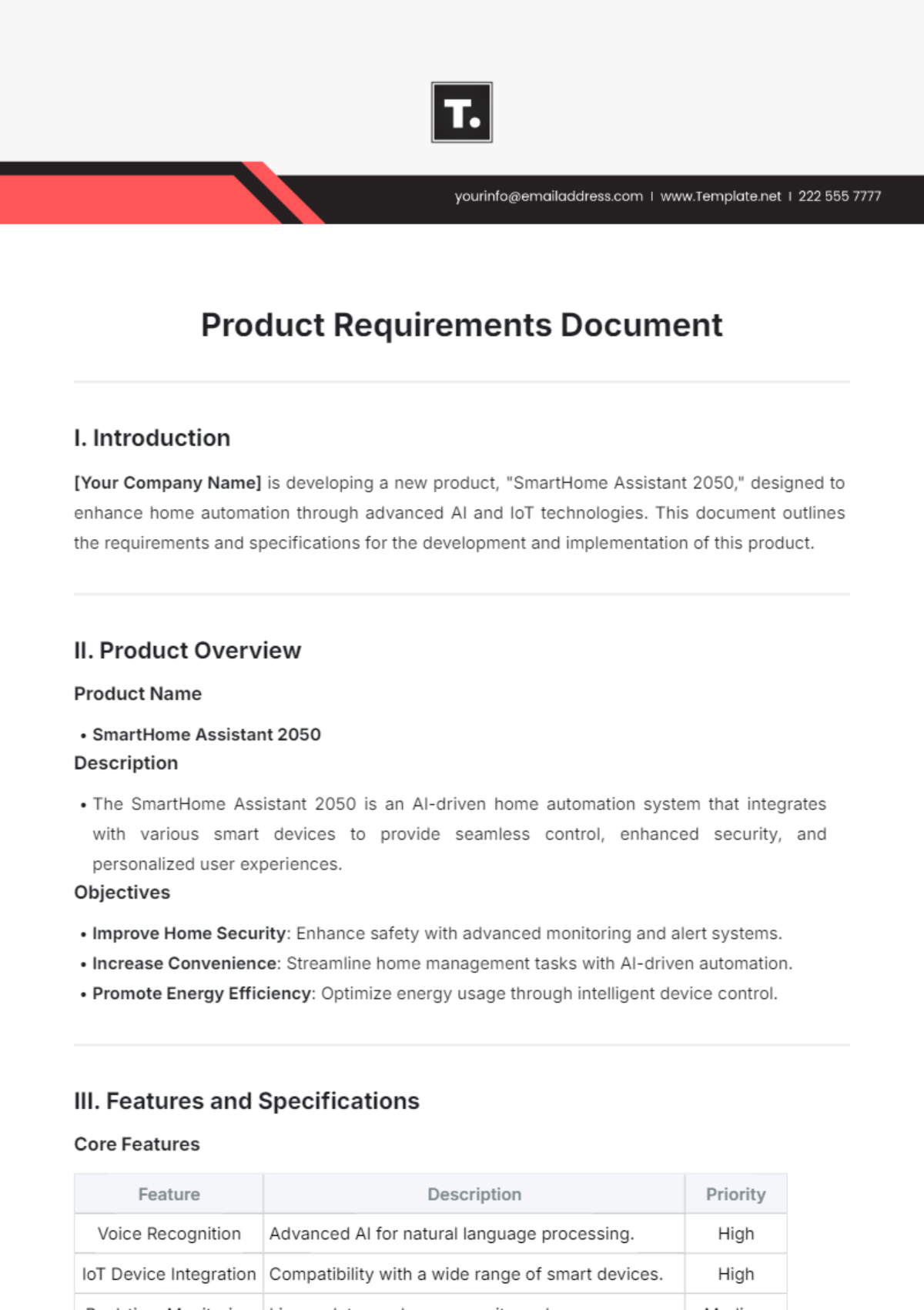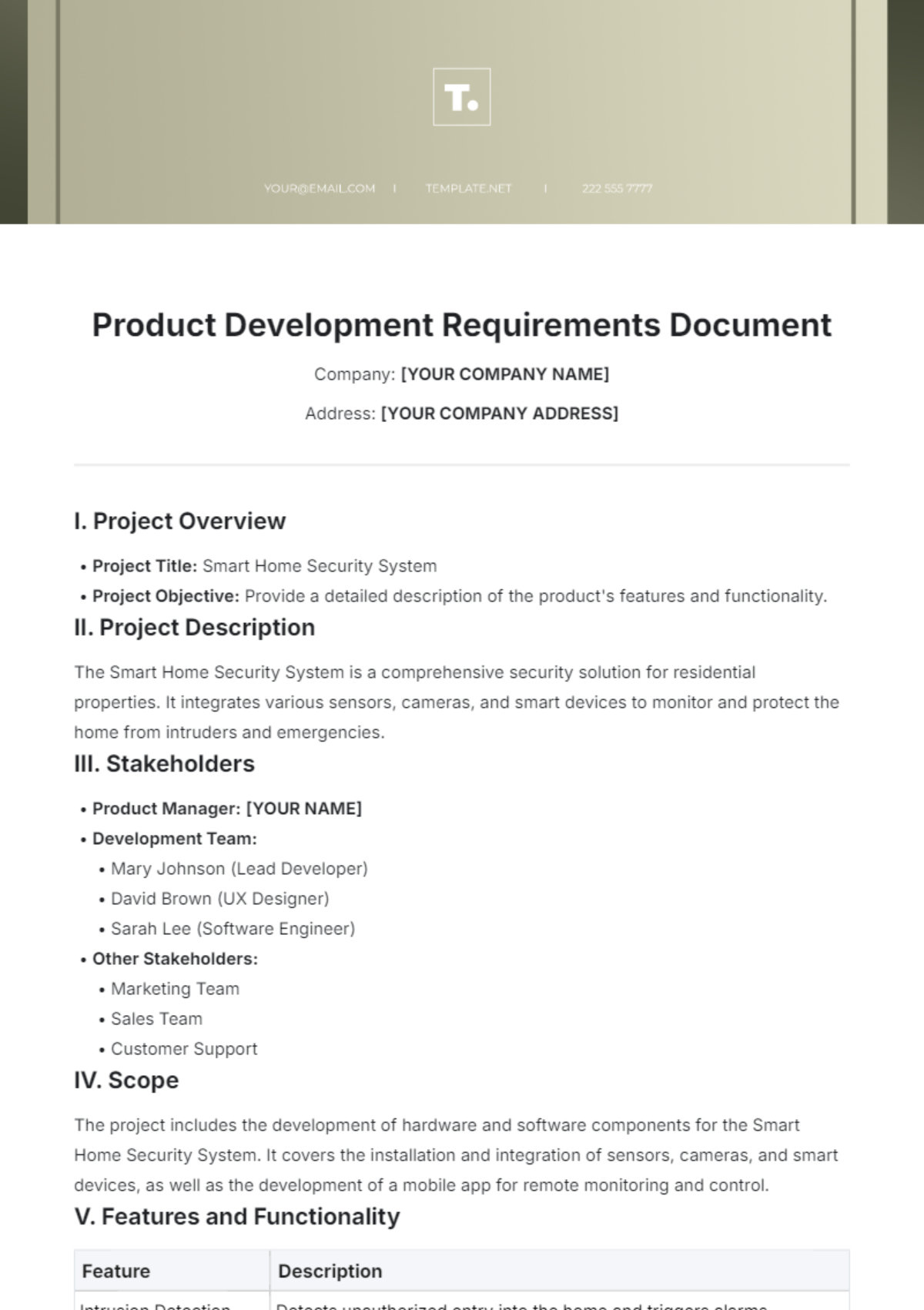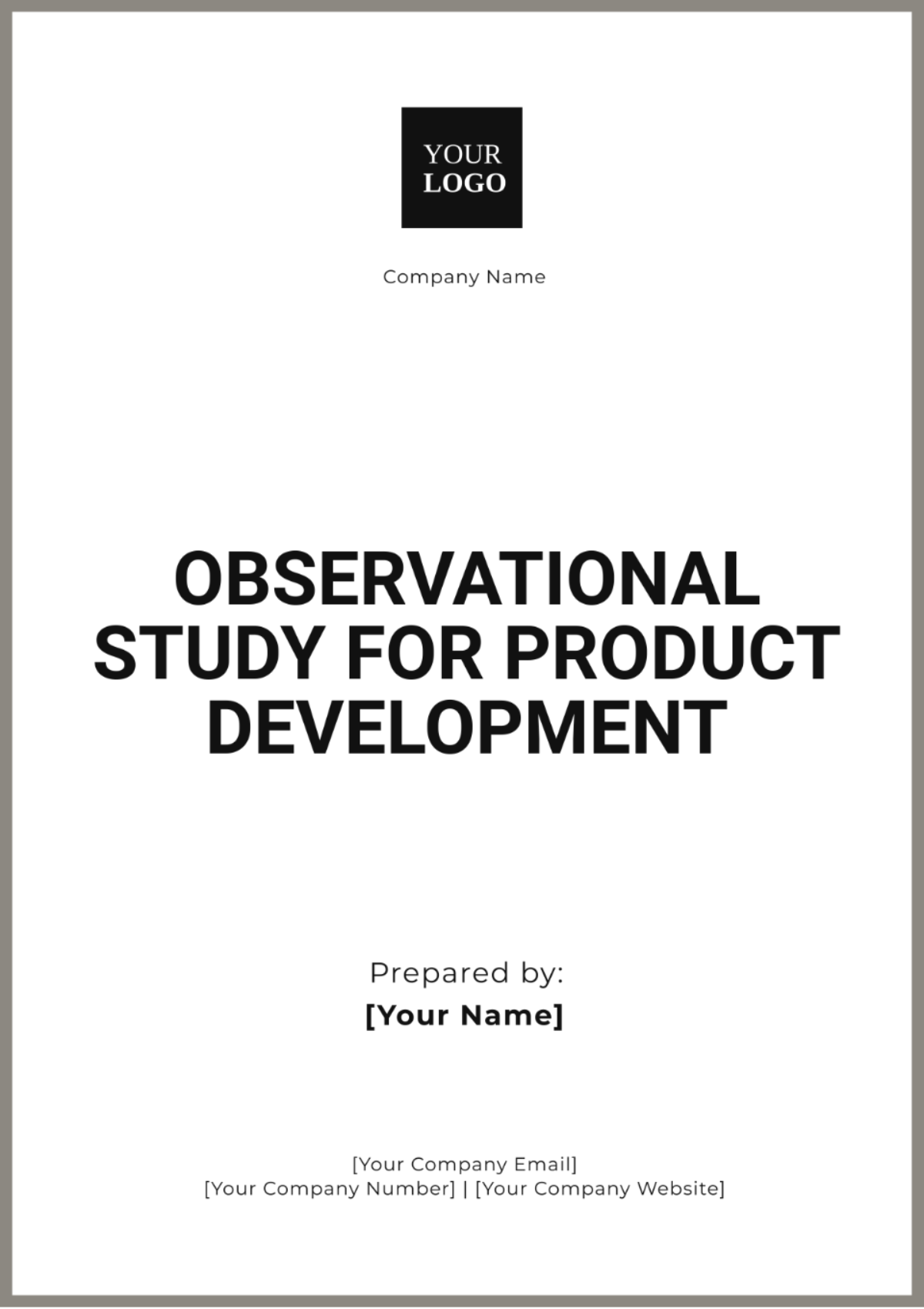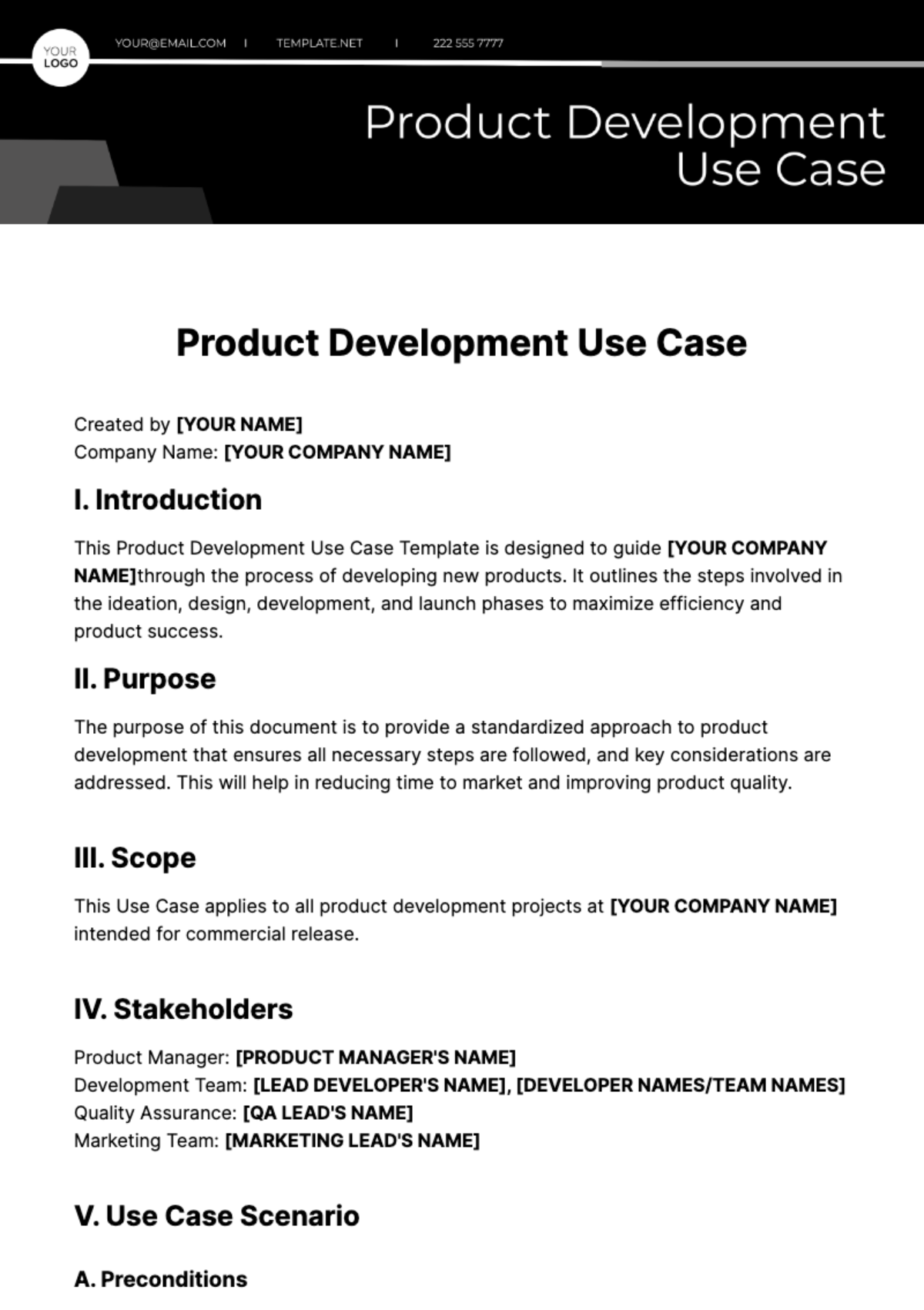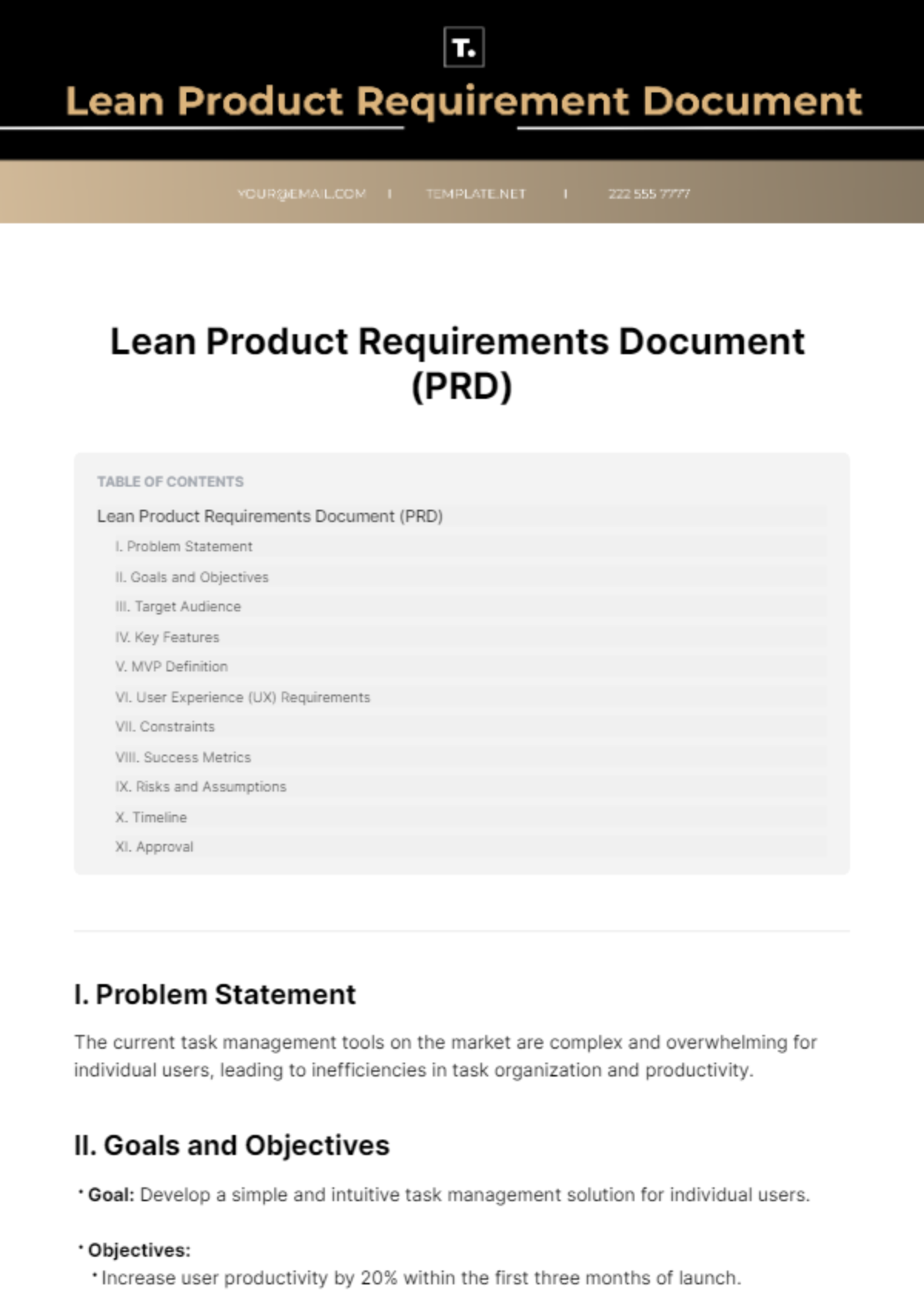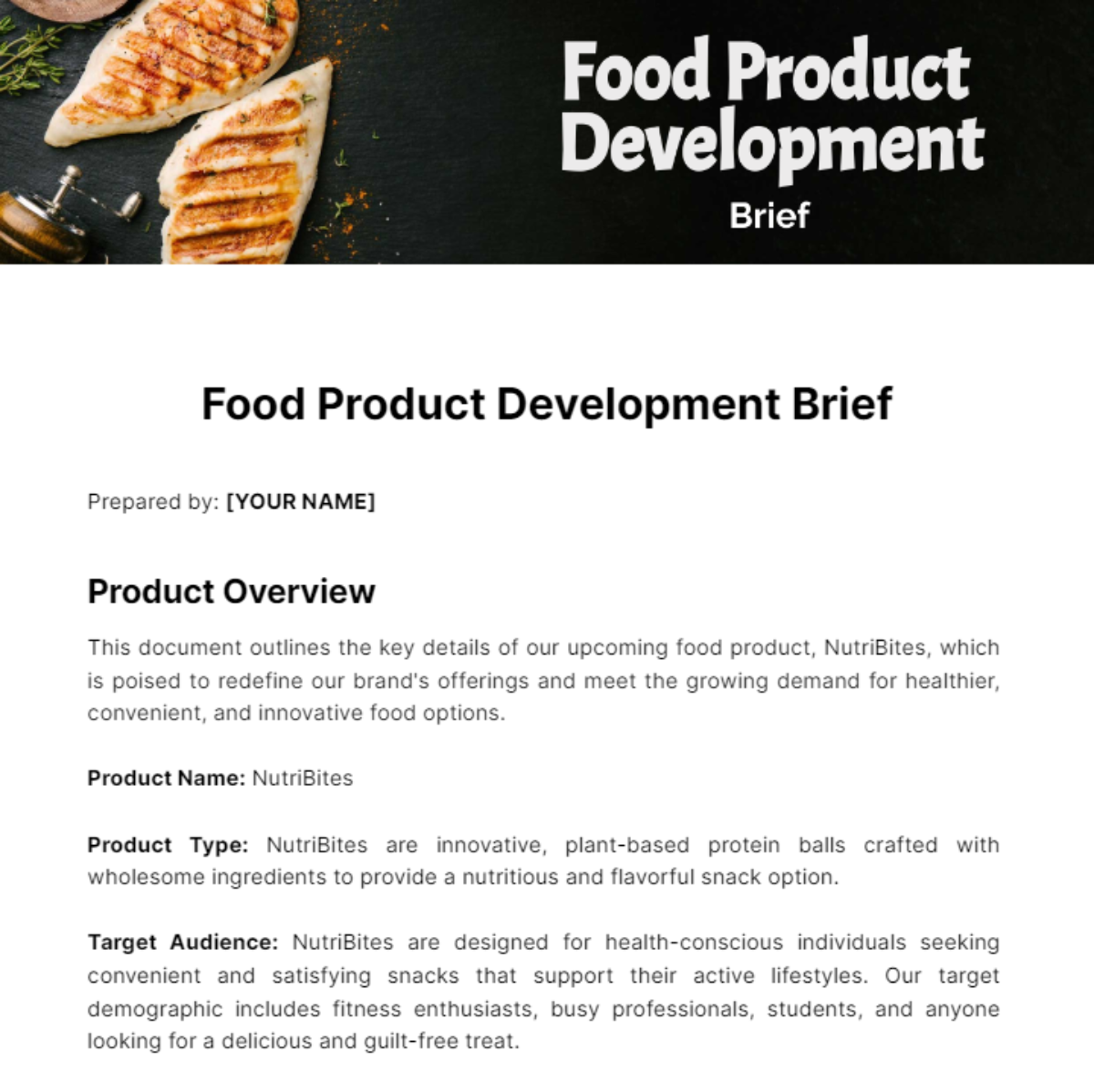Free Observational Study for Product Development Template
Observational Study for Product Development
Prepared by: [YOUR NAME]
Date: [DATE]
I. Introduction
This observational study is designed to assess user interactions with the prototype of the "SmartHome Assistant" app. Our objective is to uncover usability challenges, analyze user behaviors, and collect actionable insights that will drive the refinement of features and enhance the overall user experience. By observing how real users engage with the app in a simulated home environment, we aim to identify key areas for improvement and ensure the product effectively meets user needs and expectations.
II. Methodology
Environment: The study was conducted in a controlled environment resembling a typical home setting, where participants interacted with the app over two weeks.
Participants: 15 participants, aged 25-45, were selected based on their experience with smart home technologies. Each participant used the app for daily tasks.
Observational Techniques: Observations were made through screen recordings, user interviews, and in-app feedback mechanisms. Key metrics such as task completion time and error rates were recorded.
III. Findings
Task Completion: A significant challenge emerged with the setup wizard, where 40% of users were unable to complete the setup independently. Many required external assistance to finalize the process, indicating a need for more intuitive guidance.
Common Issues: Participants encountered frequent difficulties when integrating smart devices. Issues stemmed from ambiguous instructions and inconsistencies in device compatibility, which led to frustration and delays.
User Preferences: The majority of users expressed a strong preference for voice commands over touch controls for managing routines and settings. This suggests that enhancing voice command functionality could greatly improve user satisfaction and efficiency.
Positive Feedback: Despite the challenges, the voice recognition feature was notably well-received. Users found it to be highly intuitive and beneficial, highlighting its potential as a key strength of the app.
IV. Analysis
Navigation Issues: The high rate of incomplete setups highlights major usability problems with the current wizard. Users find it difficult to navigate, indicating a need for clearer instructions and improved device integration for a more intuitive setup experience.
Voice Command Preference: Users’ preference for voice commands over touch controls offers a key opportunity for enhancement. Expanding and refining voice command functionality could boost user satisfaction and reduce reliance on less efficient touch controls.
Compatibility Challenges: Frequent device compatibility issues reveal a need for broader support and better testing. Expanding compatibility to a wider range of devices and ensuring rigorous testing is essential to enhance user experience and app effectiveness.
V. Recommendations
Revise Setup Process: Simplify the setup wizard with step-by-step guidance and troubleshooting tips. Consider adding a progress indicator to help users understand their current stage.
Enhance Voice Features: Improve the voice command capabilities by integrating more natural language processing and expanding command options.
Increase Device Compatibility: Test and support a broader range of smart home devices to ensure seamless integration for users.
VI. Conclusion
The observational study identifies crucial areas for improvement in the SmartHome Assistant app, specifically concerning user setup and device integration. Addressing these issues is essential for enhancing user satisfaction and optimizing the overall product experience. Implementing the recommended changes will likely lead to a more intuitive setup process and more seamless device compatibility. Future research should focus on evaluating user feedback after these modifications to measure their impact and ensure continuous improvement.
VII. References
Smith, J. (2051). Advancements in User Experience Design for Smart Home Technologies. Tech Innovations Publishing.
Chen, L., & Patel, R. (2053). Integrating AI and Voice Recognition in Home Automation Systems. FutureTech Press.
Garcia, M., & Thompson, A. (2055). Overcoming Device Compatibility Challenges in IoT Products. Global Research Institute.
